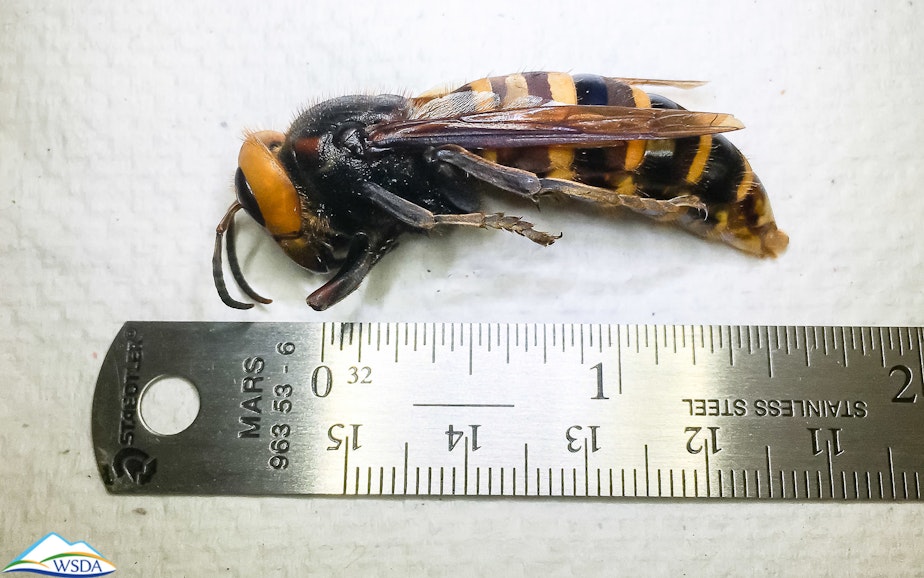Dental floss and tiny trackers: Surreal photos show hunt for murder hornets
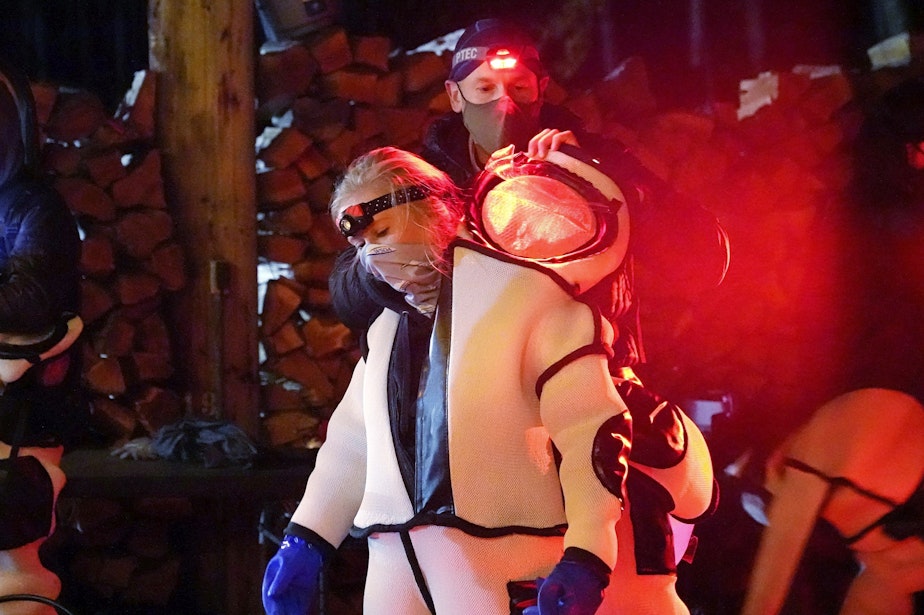
On Saturday, scientists launched a "dawn assault" on a murder hornet nest in a tree near the Canadian border.
This is a murder hornet.
Its official name is Asian giant hornet, but it has been dubbed "murder hornet" for its impressive ability to kill its prey. This is the time of year when they enter their killing season, when they demolish honeybees.

The first Asian giant hornet was identified in December 2019 in Washington state. State entomologists then launched a mission to find their nests.
Their plan was to attack a tiny tracking device to a murder hornet and follow it as it returned to its nest.
Sponsored
The hornet above, had been tagged with a tracking device.
"We had placed her on top of an apple tree,” said Sven Spichiger, managing entomologist at the Washington State Department of Agriculture. He called this hornet “a very frisky individual.”
The hornet started flying in a spiral, which is what they do when they are getting a feel for their surroundings.
"She immediately went to an adjacent tree, and we were able to locate her very quickly using tracking devices," Spichiger said. "She rested there for about five minutes and then moved to another patch of woods."
The scientists followed at each stop – from tree-to-tree, eventually to a patch of ground, and some Blackberry bushes.
Sponsored
But then she took off, and the signal was lost.
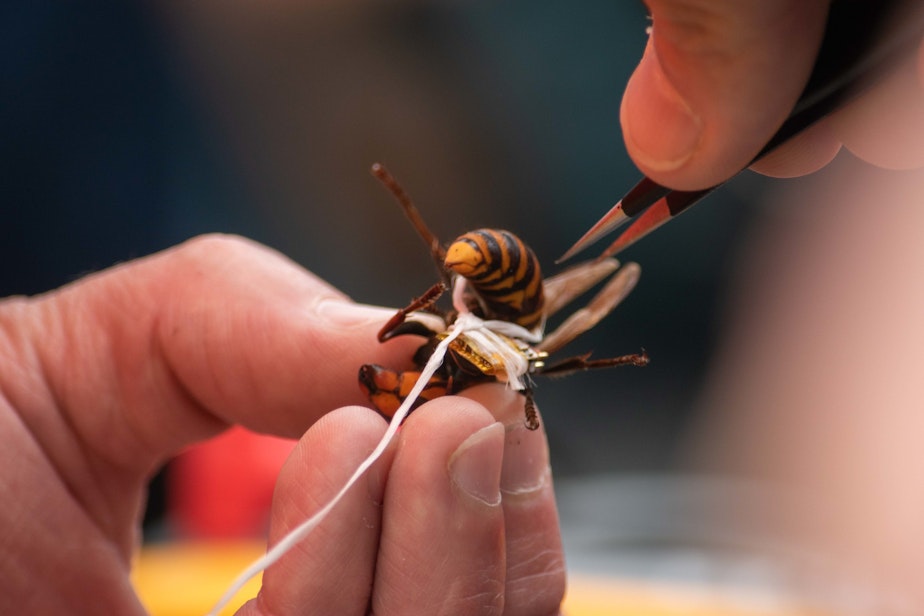
As of mid-October, 18 giant hornets had been identified in Washington state. Two were found alive.
As fall arrived, the mission became critical, as the murder hornets were entering their killing phase, when they would go into honeybee nests and kill the bees inside.
They came up with a plan that would do MacGyver proud: with dental floss and tiny radio trackers.
Sponsored
"We have these little devices that have a small Bluetooth chip on them along with an antenna and a small battery,” said Vikram Iyer, a PhD student at the University of Washington. “By using the radio signals that these things send out, we can track where they are."
Iyer was among the group that recently launched the technology, which is similar to Bluetooth devices that help people locate their lost car keys, for example.
"This is the same sort of approach that's used in traditional wildlife tracking for large animals," Iyer said. "But this is just shrunk down to a really small size."
The technology can be downloaded onto a smartphone. This allows locals to use their phones to see if they get a signal for the invasive hornets.

Sponsored
The crew that went to eradicate the nest wore thick suits, as murder hornet stings are painful to humans. They also wore face coverings, because trapped hornets spit venom.
Earlier this month, scientists said they would eradicate the nest using a combination of a vacuum system and carbon dioxide gas.
"We've actually tested this at night, the theory being that most hornets will be in the nest at night. We've decided that a dawn assault would be better," Sven Spichiger said.
"Obviously, we haven't practiced it with giant hornets trying to sting us, but we have every confidence that the suits will protect us," he said.

Sponsored
After pulling on their thick suits at dawn on Saturday, the scientists approached the tree with the hornet nest and wrapped it in plastic.
The nest, found in Blaine, Washington, near the Canadian border, was the size of a basketball, according to the Associated Press. It contained about 100 to 200 hornets.
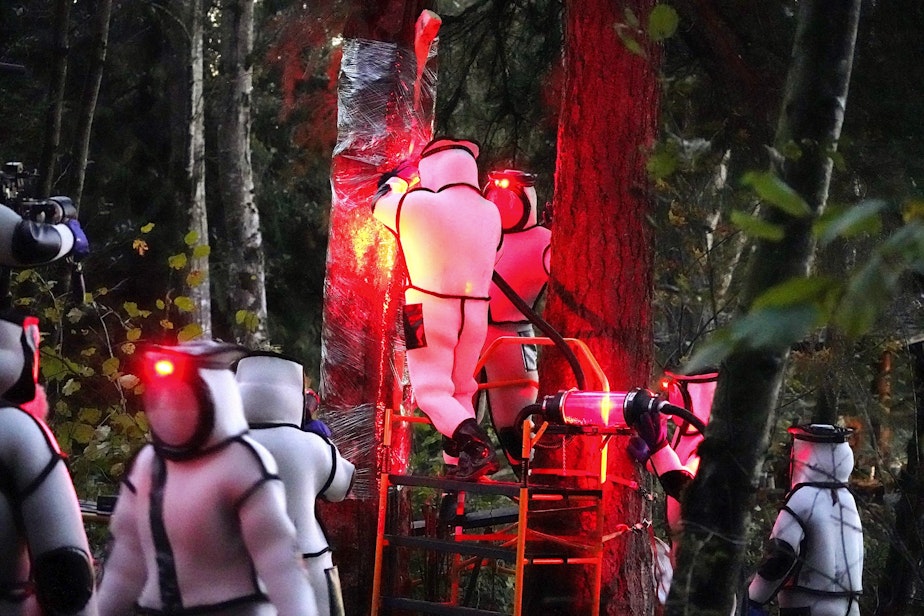
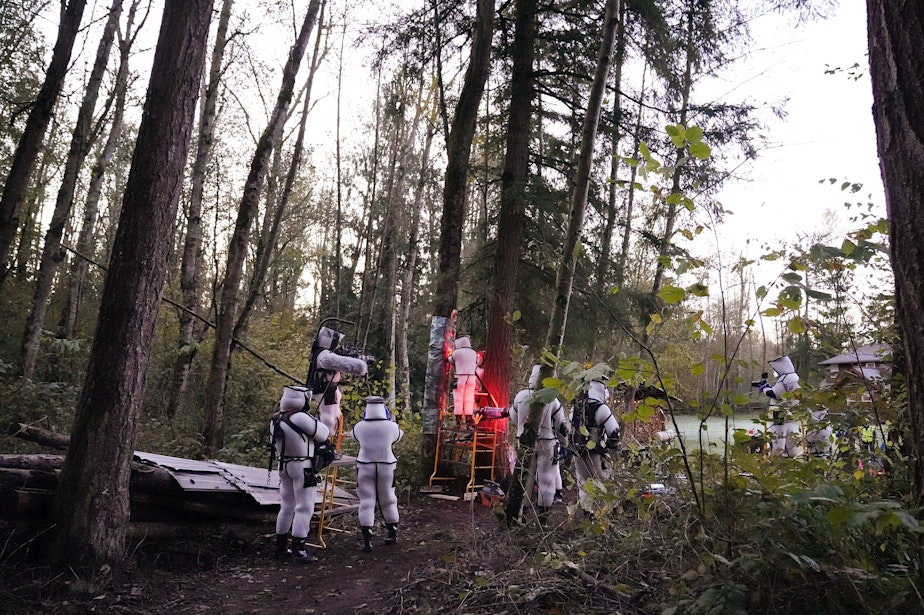
Then they vacuumed the hornets out from a hole in the tree into large canisters, according to the AP.
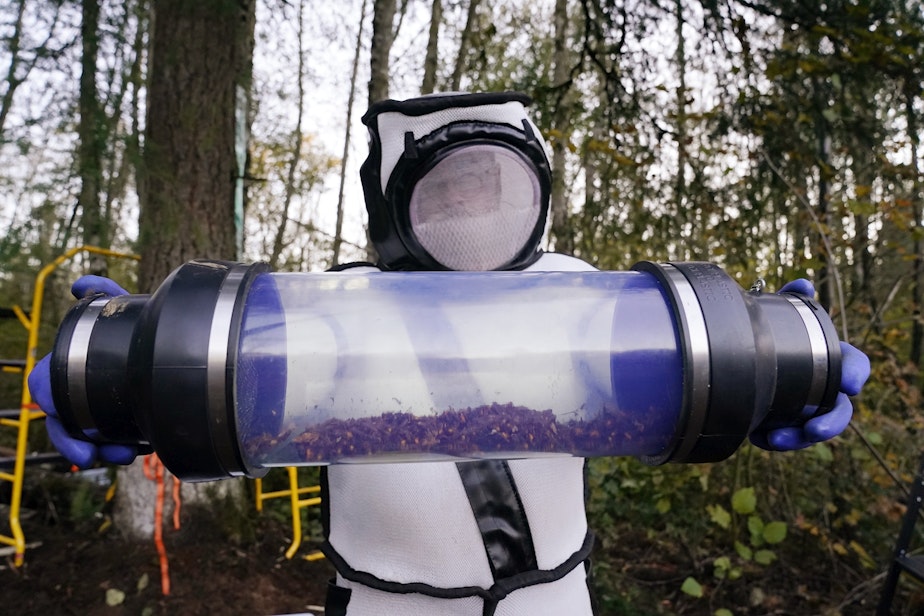
The AP reported that the tree would be cut down, so that newborn hornets inside would be removed. They would also examine if any potential queens had left the hive before the others had been sucked out.
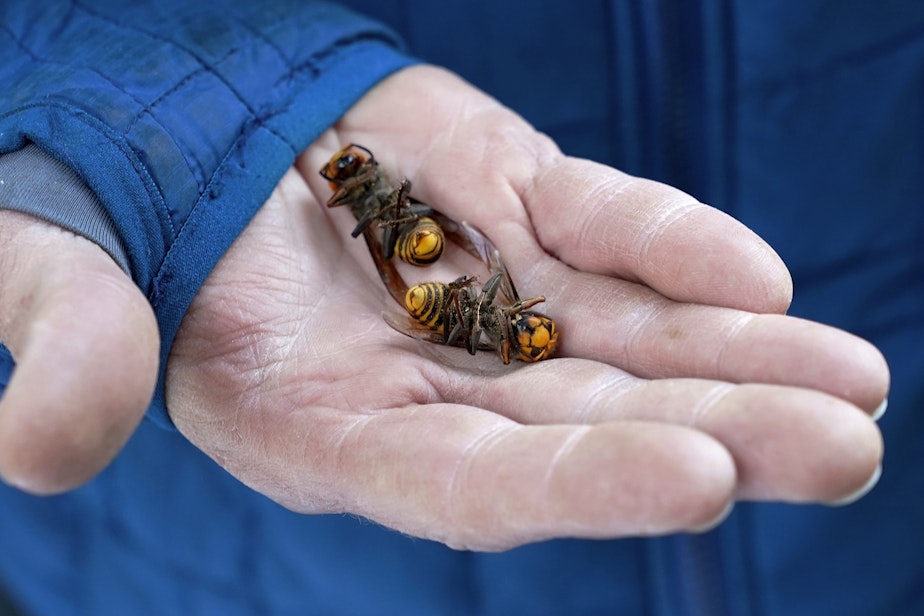
These murder hornets are about two inches long.
